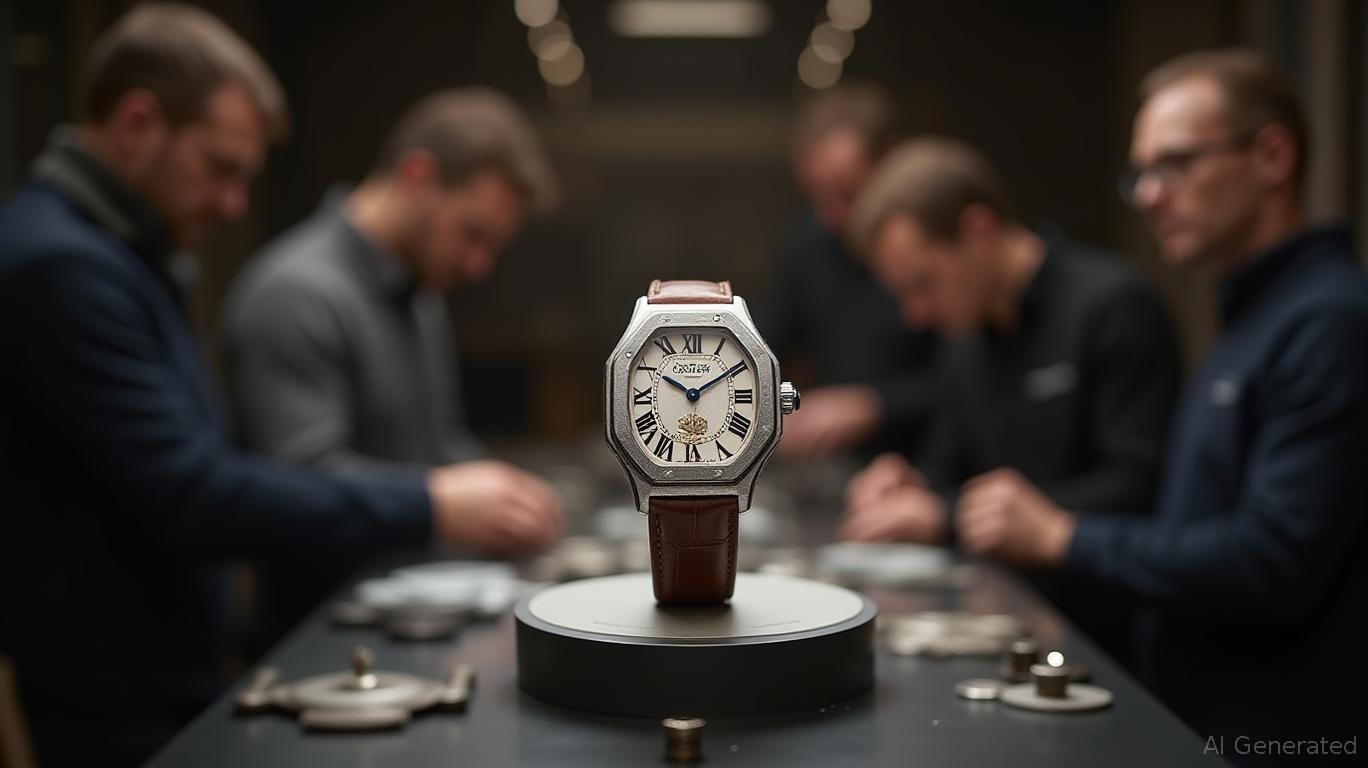Richemont's Green Pivot and Rolex Dynamics Signal an Inflection Point for Luxury's Future
The luxury sector faces headwinds. Rising interest rates, economic uncertainty, and shifting consumer preferences have dampened demand for discretionary goods. Yet within this slowdown, Richemont, the Swiss luxury conglomerate behind Cartier, Vacheron Constantin, and Piaget, is positioning itself as a bastion of resilience. Its dual focus on sustainability-driven transparency and hard luxury scarcity—a strategy inspired by Rolex's legendary supply discipline—could catalyze a long-term value inflection. Let's unpack why now is the time to take note.
Sustainability as a Moat: Richemont's Leadership in WJI 2030
Richemont's membership in the Watch & Jewellery Initiative 2030 (WJI 2030)—a coalition of 50+ brands including Kering, Chanel, and Swarovski—is more than a PR exercise. This initiative, which Richemont co-founded via Cartier, sets binding targets for climate resilience, resource preservation, and inclusiveness, with measurable milestones tied to the UN's Sustainable Development Goals (SDGs).
Key levers include:
- Climate Action: Cartier achieved its 2025 carbon reduction target three years early, cutting emissions by 46% while investing in nature-based solutions like forest restoration.
- Supply Chain Transparency: 100% of Tier 1 suppliers are now RJC-certified, ensuring ethical sourcing of diamonds and precious metals—a critical differentiator in an era of ESG scrutiny.
- Circularity: Initiatives like the Circle Materials Platform repurpose unused stock, reducing waste while aligning with consumer demand for sustainable luxury.
The payoff? Reduced regulatory risk and enhanced brand equity. By voluntarily adhering to higher standards than competitors, Richemont insulates itself from future supply chain disruptions and greenwashing accusations.

The Balance Sheet: A Fortress of Financial Flexibility
Richemont's financial health is a cornerstone of its resilience. With €6.1 billion in cash and equivalents (as of Q1 2025) and a net debt-to-equity ratio of -0.4x (negative debt), it can weather softness in discretionary spending while investing in growth. Compare this to peers like LVMH, which has a net debt-to-equity of 0.6x—Richemont's liquidity buffer is unmatched.
Profit margins are another strength. Its wholesale gross margin remains above 70%, with premium hard luxury brands like Vacheron Constantin and IWC Schaffhausen driving stable demand. This contrast with softer fashion segments (e.g., clothing, accessories) underscores the wisdom of its portfolio focus.
Competitive Edge: The Rolex Dynamics Playbook
Richemont's hard luxury dominance—watches and jewelry—acts as a natural hedge against economic cycles. Like Rolex, its brands limit supply to preserve exclusivity and pricing power. For example:
- Cartier's SIAMESE bracelet: A classic design with a 6–12-month waitlist due to constrained production, ensuring scarcity drives desirability.
- Rolex-like pricing discipline: Vacheron Constantin's Patrimony line has seen +12% annual price increases since 2021, outpacing inflation while maintaining demand.
This supply-side control creates a virtuous cycle: limited availability fuels speculation and secondary-market premiums, further elevating brand prestige.
Valuation: A Buying Opportunity in a Soft Market
Despite near-term headwinds—Chinese tourism lags and inventory corrections—Richemont's stock trades at a 16.2x forward P/E, a discount to its five-year average of 19.5x. Meanwhile, its ROE of 28% (vs. 18% for LVMH) reflects superior capital allocation.
Investors should focus on the long game. Sustainability leadership and supply discipline are not just ethical wins—they're moats against commoditization. As regulators tighten ESG standards and consumers prioritize authenticity, Richemont's early adoption of WJI 2030's framework positions it to capture premium pricing for decades.
Conclusion: The Green Premium Is Here to Stay
Richemont's combination of ESG credibility, hard luxury scarcity, and financial firepower makes it uniquely insulated from sector volatility. While near-term sales may lag due to macroeconomic headwinds, its structural advantages are undeniable. For investors seeking exposure to a luxury sector reshaped by sustainability and exclusivity, Richemont's current valuation is a compelling entry point.
Investment Thesis: Buy Richemont for its balance sheet strength, leadership in ESG-driven luxury, and the enduring appeal of its iconic hard goods. The inflection point is near—this is a stock to hold for the next decade.

Comments
No comments yet